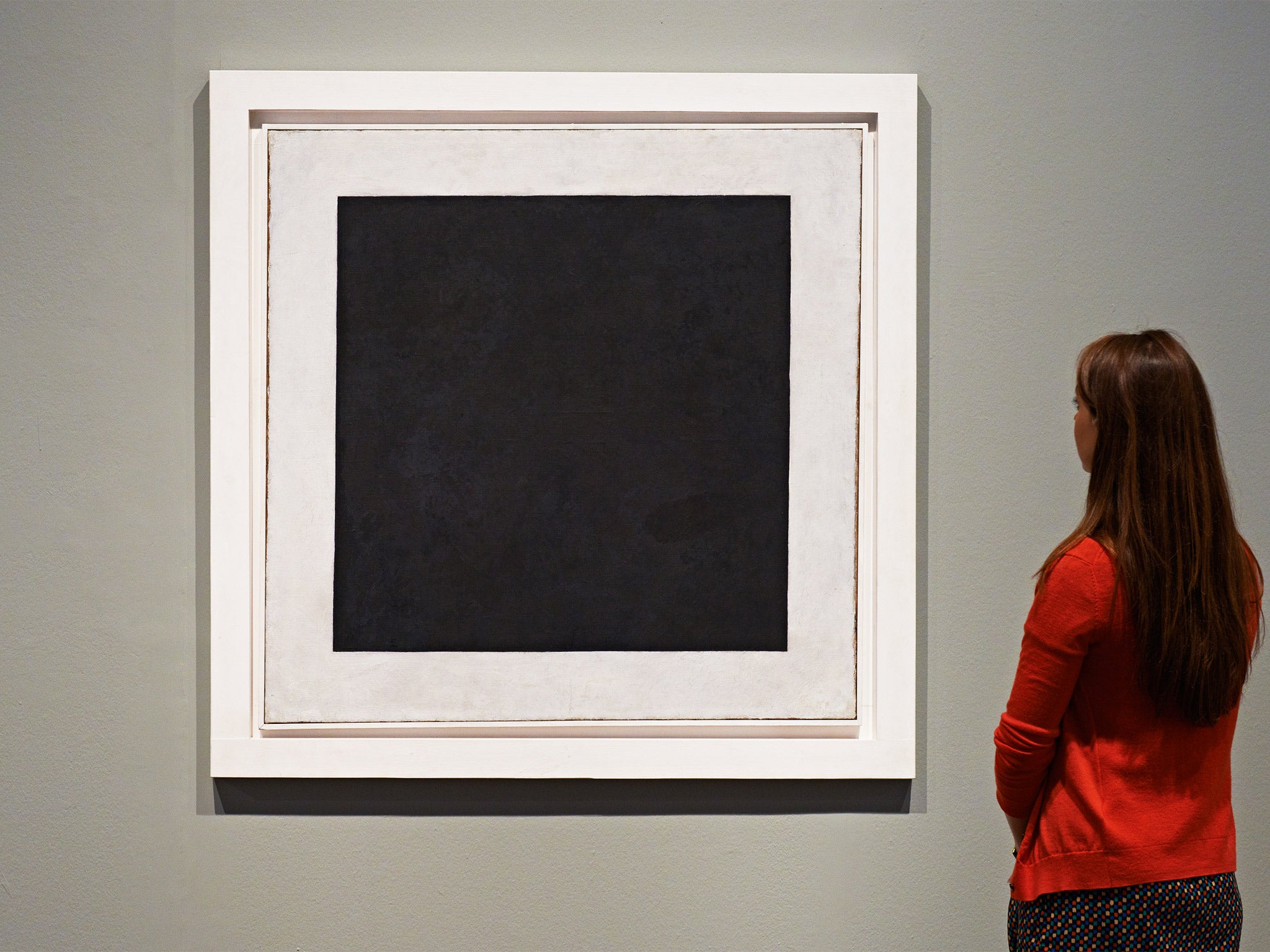Kasimir Malevich's 'Black Square': What does it say to you?
A pivotal moment in the history of modern art or the work of a self-publicist with the gift of the gab? Michael Glover searches for meaning

Your support helps us to tell the story
From reproductive rights to climate change to Big Tech, The Independent is on the ground when the story is developing. Whether it's investigating the financials of Elon Musk's pro-Trump PAC or producing our latest documentary, 'The A Word', which shines a light on the American women fighting for reproductive rights, we know how important it is to parse out the facts from the messaging.
At such a critical moment in US history, we need reporters on the ground. Your donation allows us to keep sending journalists to speak to both sides of the story.
The Independent is trusted by Americans across the entire political spectrum. And unlike many other quality news outlets, we choose not to lock Americans out of our reporting and analysis with paywalls. We believe quality journalism should be available to everyone, paid for by those who can afford it.
Your support makes all the difference.The painting itself sits in a relatively darkened room at Tate Modern, where a major retrospective of the career of its creator, Kasimir Malevich from Kiev, opens today. Given that the painting is black from top to toe and hip to hip, and that it is often said to represent a pivotal moment in the history of abstraction and the art of the 20th century, this strikes the onlooker as an odd decision. Why not be given the opportunity to see it as clearly as possible?
There are other oddities about the organisation of this room, too. On the opposite wall, a filmed fragment of a relatively recent restaging of a revolutionary opera called Victory Over the Sun (costumes by Malevich) is being shown, all noise and raucousness; an opera, first performed in St Petersburg in 1913, whose purpose was to announce the creation of a language which would be incomprehensible to everyone, and, perhaps as a corollary, herald the death of reason. The sun of reason has retired from the heavens. Would it not have been more sensible to lift Black Square away from all this ruckus into a space of its own, so that we could subject it to the kind of contemplative scrutiny it surely merits? Does it not at least deserve to be treated like a Rothko?
Still, in the half-gloom we try to do our best. We stare into its blackness, surrounded by a border of grey. Its date puzzles us: 1923. Surely that date is incorrect? No, it is correct, we discover. This is not the first version of Black Square by any means. Malevich painted four versions of it at different times, this being the next to the last. We cannot see the first, made in 1915, because its surface is subject to craquelure, and it is therefore much too delicate to travel.
Yet even that date raises questions. Did not Malevich always claim that he had made Black Square in 1913? And yet the so-called first version is dated two years later. The answer is simple: Malevich conceived the idea for Black Square in 1913. The idea was not in fact first realised until 1915. This raises two interesting points: that an artist can regard an idea for a work as the equal of its realisation on canvas. And that various versions can exist, painted at different times. So much for the uniqueness of the art object.
So what about the surface of this work? I try my best to look at it as squintingly closely as possible. Is that blackness entirely smooth and regular, and, if it were not, would that matter? The fact is that it is not. We think – we are almost sure – that we can see strange, small, wispy hauntings of spectral forms flitting across its surface. Shadowy forms of plant life? Or is it some trick of reflected life?
Malevich, who was a tremendous, self-publicising theorist, said a lot about this work. He called it an end and a beginning. It was the end of every attempt to feebly imitate the world of nature. There would be no copying any more, no more representation. It would be the beginning of an art which would be entirely self-sustaining. Many others too would herald it as a new dawn, a line in the sand. The artist Frank Stella recently told me that abstraction offered an infinite variety of open-ended possibilities to the artist, that figuration had held the field for centuries, and must now, finally, admit defeat. The ghost of Kasimir Malevich was standing behind him when he said those words.
In fact, this worshipping at the altar of abstraction is deeply questionable. The contentlessness of abstraction can be as limiting and as dull as any attempt to paint the world. What is more, the human mind is always so curiously undependable, that even the starkest purist cannot stop himself looking for signs of the world in the most abstract of works. Otherwise, what exactly is it that we are supposed to be looking at, and can this ever-elusive something really hope to sustain us to the depths of our emotional natures?
In short, why, Mr Malevich, did you go back to painting people in the end?
Join our commenting forum
Join thought-provoking conversations, follow other Independent readers and see their replies
Comments